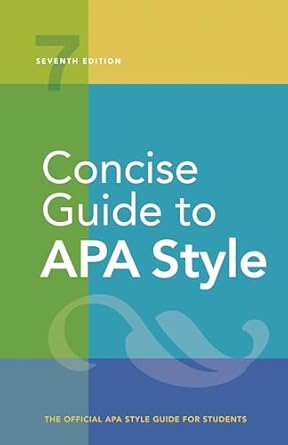[toc]
apa headings mastering academic paper structure
Concise Guide to APA Style: 7th Edition (OFFICIAL)
Page 47 Review
Understanding APA Style Headings: A Deep Dive
The excerpt provides a detailed explanation of heading levels in APA style, a crucial aspect of academic writing.
It emphasizes consistency and clarity in structuring research papers.
Let’s break down the key elements discussed.
Avoiding Single Subsection Headings
The text highlights the importance of avoiding solitary subsection headings within a section. “Avoid having only one subsection heading within a section, just like in an outline; use at least two subsection headings within a section, or use none (e.g., in an outline, a section numbered with a Roman numeral would be divided into either a minimum of A and B subsections or no subsections; an A subsection could not stand alone).” This rule mirrors the logic of outlines, ensuring a balanced and well-developed structure.
Heading Levels in APA Style
APA style utilizes five heading levels to delineate sections and subsections. “APA Style headings have five possible levels: Level 1 headings are used for top-level or main sections, Level 2 headings are subsections of Level 1, and so on (see Table 1.3).” This hierarchical system allows for a clear and organized presentation of information.
Maintaining a Consistent Heading Structure
Regardless of the number of levels of subheading, the heading structure should maintain a top-down progression. “Regardless of the number of levels of subheading within a section, the heading structure for all sections follows the same top-down progression.
Each section starts with the highest level of heading, even if one section has fewer levels of subheading than another section.” This ensures a consistent flow and readability throughout the paper.
Example: Psychology Paper Headings
The text provides an example of how heading levels might be applied in a psychology paper. “For example, in a psychology paper with Level 1 Method, Results, and Discussion headings, the Method and Results sections may each have two levels of subheading (Levels 2 and 3), and the Discussion section may have only one level of subheading (Level 2).
Thus, there would be three levels of heading for the paper overall.” This illustrates the flexibility and adaptability of the heading system.
Headings in the Introduction
A common mistake is using an “Introduction” heading. “Do not begin a paper with an “Introduction” heading; because the first paragraphs of a paper are understood to be introductory, the paper title at the top of the first page of text acts as a de facto Level 1 heading (see Figure 1.3).” The paper title itself serves as the Level 1 heading for the introduction.
Subheadings within the Introduction
If subheadings are needed in the introduction, Level 2 headings should be used. “For subsections within the introduction, use Level 2 headings for the first level of…” This allows for the division of the introduction into specific areas of focus.
Illustrative Example: Risk Factors for Depression
The provided figure illustrates the proper use of headings in an introduction, specifically focusing on risk factors for depression.
It shows the paper title acting as the Level 1 heading and Level 2 headings such as “Genetic Factors” and “Environmental Factors” used as subheadings.
The text also includes supporting information, such as, “Depression is a serious health problem that affects many people.
Researchers have estimated that between 16% and 42% of people will meet criteria for major depressive disorder during their lifetime (Kessler et al,, 2005; Moffitt et al., 2010).
Both genetic and environmental factors influence the development of depression (Pearlman, 2017).”
Furthermore, it adds, “A history of major depression in the family increases the risk for a person to develop depression (Gomez & Yates, 2014).” and “Environmental stressors such as the death of a loved one also contribute to the likelihood that a person will develop depression (Pearlman, 2017).”
Key Takeaways
- Avoid single subsection headings.
- Utilize five heading levels to structure your paper.
- Maintain a consistent top-down heading structure.
- Do not use an “Introduction” heading.
- Use Level 2 headings for subheadings in the introduction.
By adhering to these guidelines, writers can create clear, organized, and professional-looking academic papers that effectively communicate their research findings.
Buy full ebook for only $18: https://www.lulu.com/shop/american-psychological-association/concise-guide-to-apa-style-7th-edition-official/ebook/product-rmzpq54.html?page=1&pageSize=4
Apa Headings Mastering Academic Paper Structure
Read more: Proper Citation: Avoid Plagiarism & Boost Academic Integrity


Leave a Reply